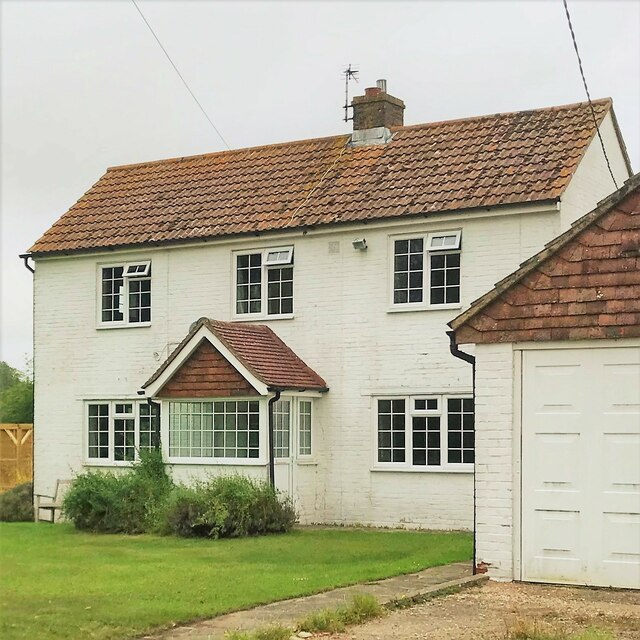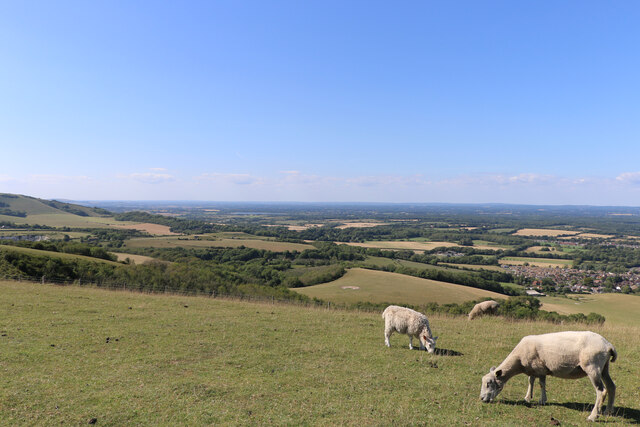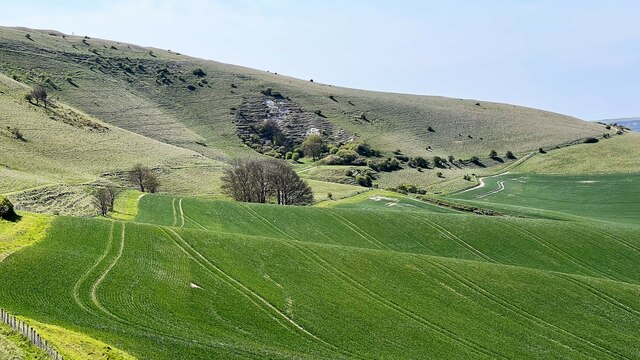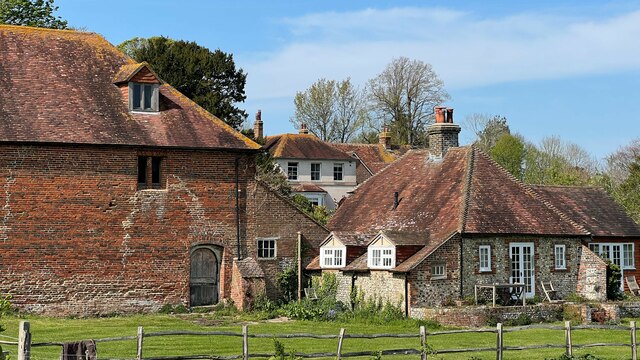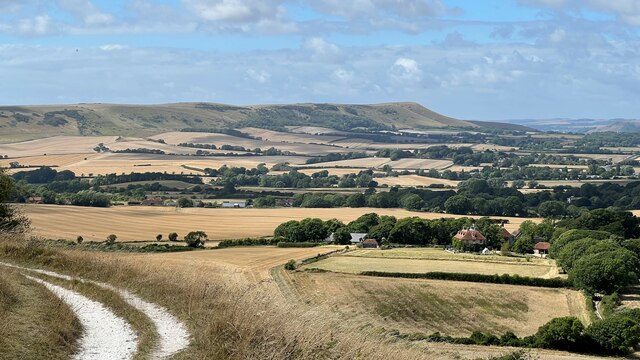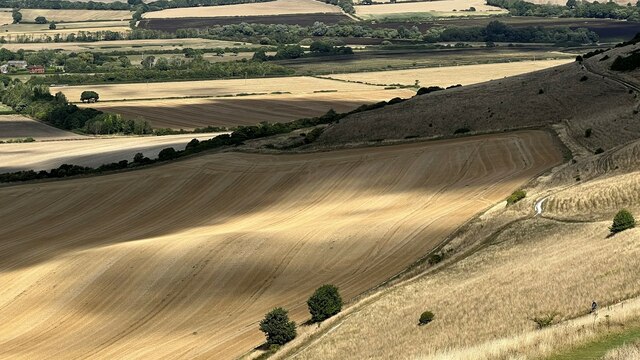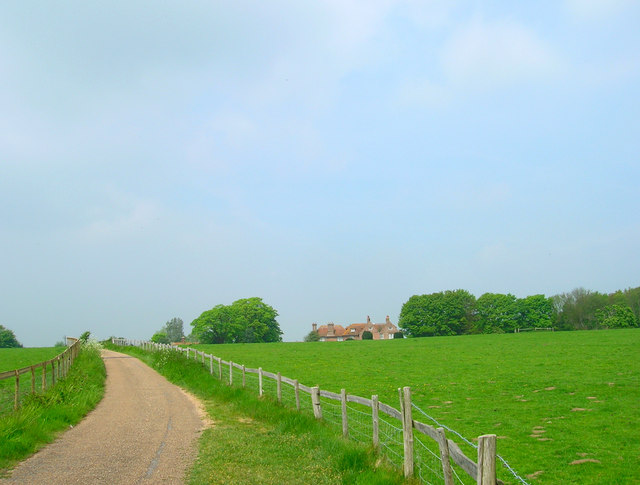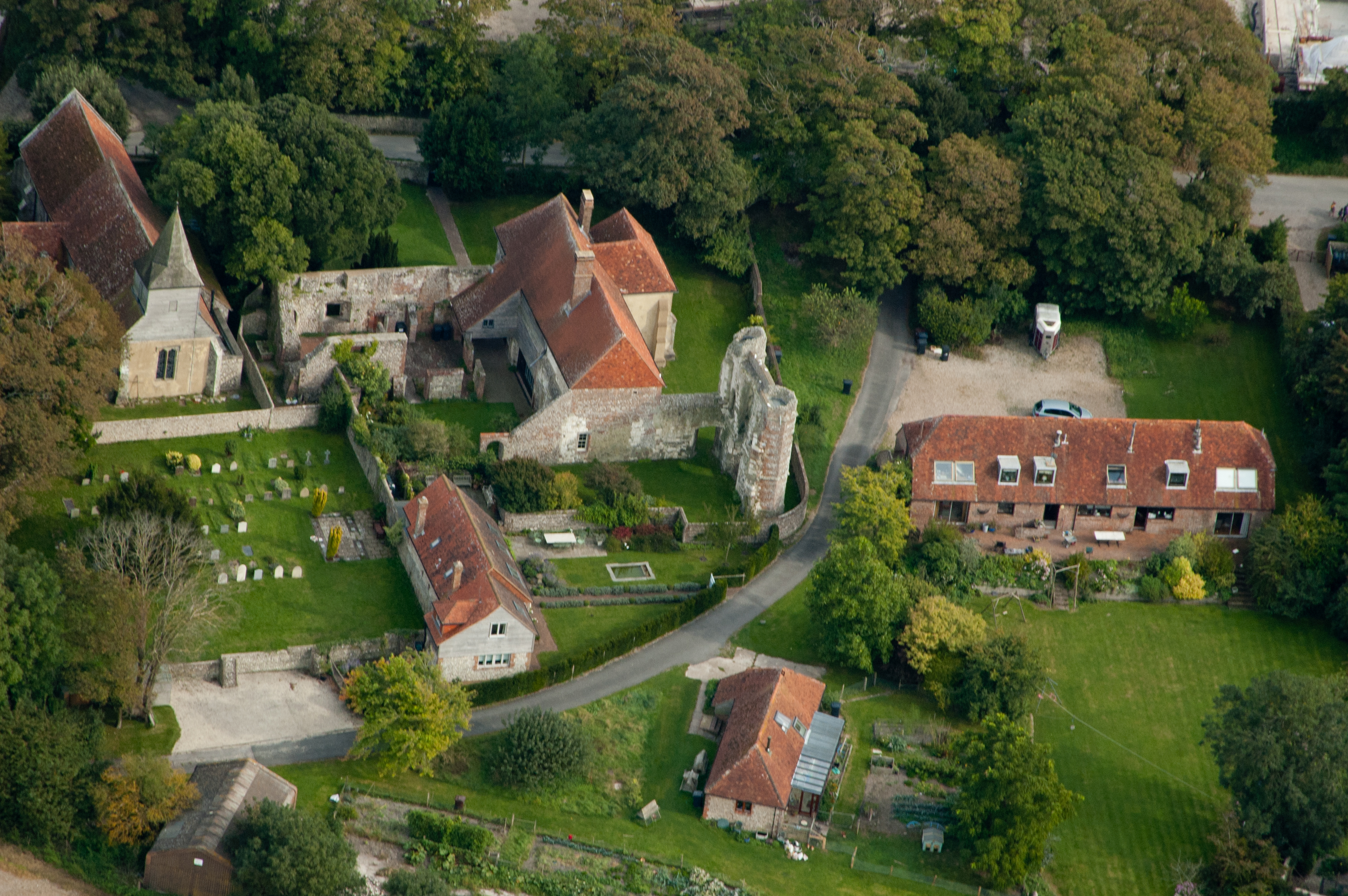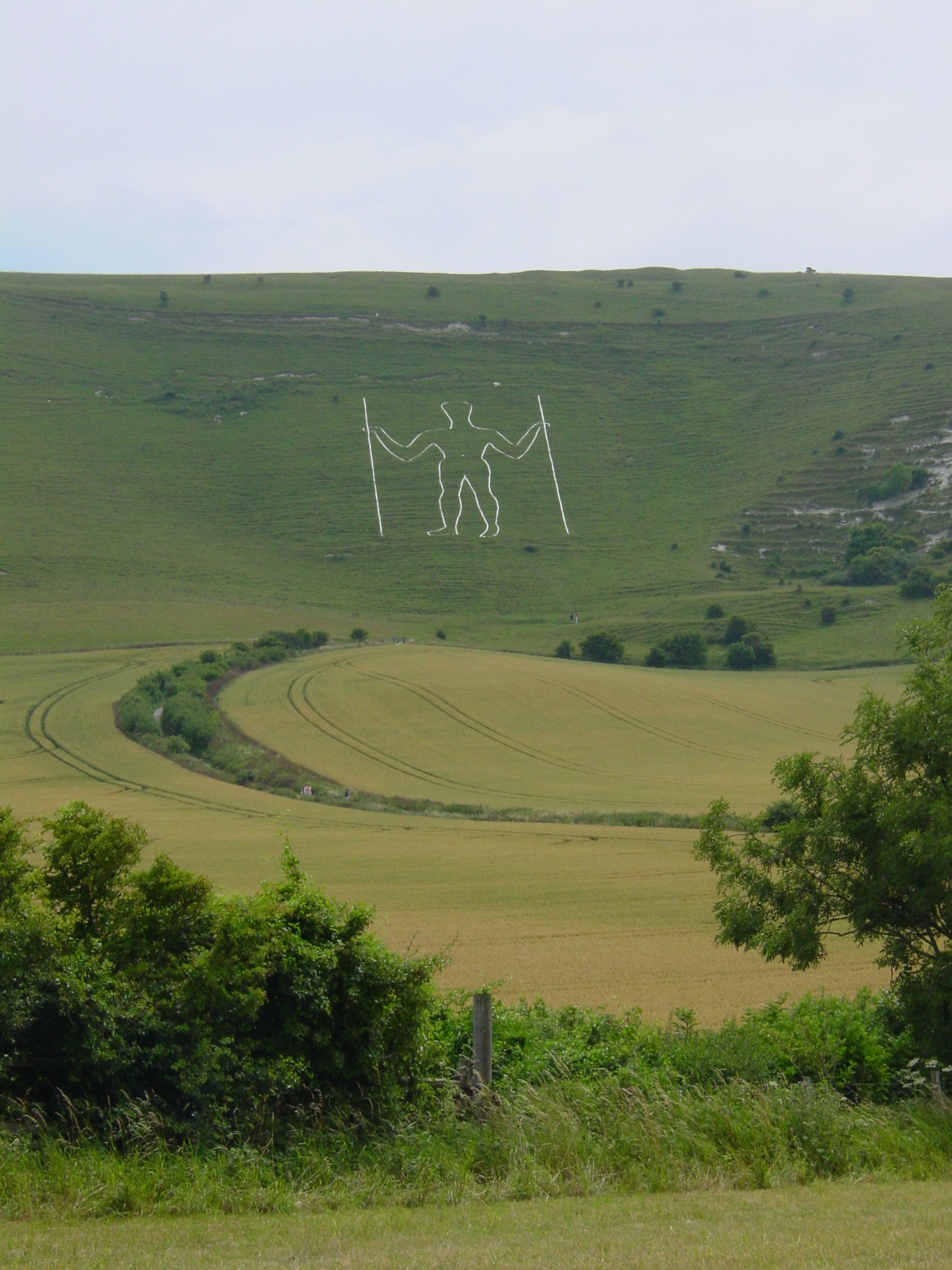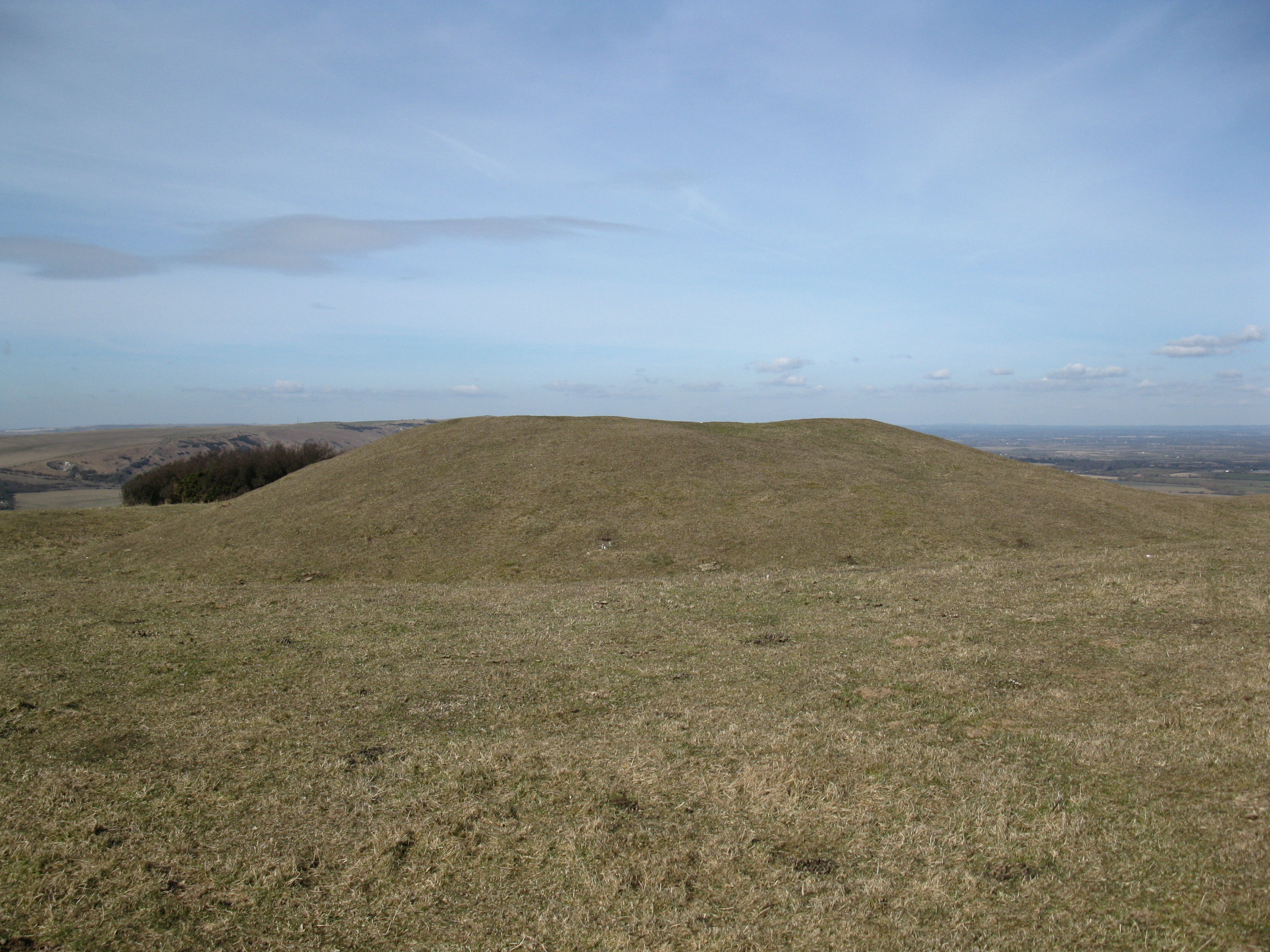Folkington
Settlement in Sussex Wealden
England
Folkington

Folkington is a charming village located in the county of Sussex, England. Situated in the South Downs National Park, Folkington is surrounded by picturesque countryside, rolling hills, and panoramic views. It is located approximately six miles north of the historic town of Eastbourne.
The village of Folkington is known for its tranquil and idyllic setting, making it a popular destination for nature lovers and those seeking a peaceful retreat. The area is abundant in natural beauty, with its green fields, meandering rivers, and dense woodlands. This makes it a perfect spot for hiking, cycling, and exploring the outdoors.
Folkington is also home to a small but tight-knit community. The village boasts a charming church, St. Peter and St. Paul, which dates back to the 12th century and is a prominent feature of the local landscape. Additionally, there are a few traditional cottages and farmhouses that add to the village's rustic charm.
While Folkington may be a small village, it is conveniently located near larger towns and cities. The vibrant coastal town of Eastbourne offers a range of amenities, including shops, restaurants, and entertainment options. The city of Brighton is also within easy reach, providing further opportunities for shopping, cultural events, and a bustling nightlife.
In summary, Folkington is a peaceful and scenic village in Sussex, offering a tranquil escape from the hustle and bustle of city life. With its natural beauty, historical charm, and proximity to larger towns, Folkington is a delightful place to visit or call home.
If you have any feedback on the listing, please let us know in the comments section below.
Folkington Images
Images are sourced within 2km of 50.813638/0.21344438 or Grid Reference TQ5603. Thanks to Geograph Open Source API. All images are credited.
![Wilmington village [1] The Long Man is cut on the slopes of Windover Hill, near Wilmington. The figure is 235 feet (72 metres) tall. The figure may have been cut in the 16th or 17th century. The figure is formed from white-painted breeze blocks and lime mortar.
The village of Wilmington, in East Sussex, is about 6 miles (10 kilometres) northwest of Eastbourne. The place-name 'Wilmington' is first attested in the Domesday Book of 1086. The name means 'the town or settlement of Wighelm's or Wilhelm's people'. Near the village is the hill figure, The Long Man.](https://s0.geograph.org.uk/geophotos/07/22/18/7221864_0b4bebd9.jpg)
![Wilmington village [2] An information board about The Long Man.
The Long Man is cut on the slopes of Windover Hill, near Wilmington. The figure is 235 feet (72 metres) tall. The figure may have been cut in the 16th or 17th century. The figure is formed from white-painted breeze blocks and lime mortar.
The village of Wilmington, in East Sussex, is about 6 miles (10 kilometres) northwest of Eastbourne. The place-name 'Wilmington' is first attested in the Domesday Book of 1086. The name means 'the town or settlement of Wighelm's or Wilhelm's people'. Near the village is the hill figure, The Long Man.](https://s3.geograph.org.uk/geophotos/07/22/18/7221867_6ece0960.jpg)
![Wilmington village [3] Two horses graze in a field of buttercups.
The village of Wilmington, in East Sussex, is about 6 miles (10 kilometres) northwest of Eastbourne. The place-name 'Wilmington' is first attested in the Domesday Book of 1086. The name means 'the town or settlement of Wighelm's or Wilhelm's people'. Near the village is the hill figure, The Long Man.](https://s2.geograph.org.uk/geophotos/07/22/18/7221870_8edd74de.jpg)
![Wilmington village [4] This recently created footpath runs alongside the minor road to meet the path across the fields to The Long Man. This avoids walkers having to use the narrow minor road.
The village of Wilmington, in East Sussex, is about 6 miles (10 kilometres) northwest of Eastbourne. The place-name 'Wilmington' is first attested in the Domesday Book of 1086. The name means 'the town or settlement of Wighelm's or Wilhelm's people'. Near the village is the hill figure, The Long Man.](https://s3.geograph.org.uk/geophotos/07/22/18/7221875_e5ed93c5.jpg)
![Wilmington village [5] Alongside the minor road is the former village pound, a rectangle of flint walls, probably 19th century, in the corner of the farmyard of Priory Farm. Listed, grade II, with details at: <span class="nowrap"><a title="https://historicengland.org.uk/listing/the-list/list-entry/1028510" rel="nofollow ugc noopener" href="https://historicengland.org.uk/listing/the-list/list-entry/1028510">Link</a><img style="margin-left:2px;" alt="External link" title="External link - shift click to open in new window" src="https://s1.geograph.org.uk/img/external.png" width="10" height="10"/></span>
The village of Wilmington, in East Sussex, is about 6 miles (10 kilometres) northwest of Eastbourne. The place-name &#039;Wilmington&#039; is first attested in the Domesday Book of 1086. The name means &#039;the town or settlement of Wighelm&#039;s or Wilhelm&#039;s people&#039;. Near the village is the hill figure, The Long Man.](https://s2.geograph.org.uk/geophotos/07/22/18/7221878_79102f72.jpg)
![Wilmington village [6] The remains of Wilmington Priory. The priory was part of the Benedictine Abbey of Grestain in Normandy and was founded circa 1200 as a grange for the supervision of the Abbey&#039;s English estates. It was suppressed in 1414. The present L-shaped house, seen at <a href="https://www.geograph.org.uk/photo/7221893">TQ5404 : Wilmington village [7]</a> is 14th century, altered and adapted in the 18th century. Seen here are the ruins of the 14th century Upper Hall of two octagonal turrets with a wall between them. To the north of the house are further ruins, beneath which is a 14th century vaulted undercroft. Listed, grade I, with details at: <span class="nowrap"><a title="https://historicengland.org.uk/listing/the-list/list-entry/1185052" rel="nofollow ugc noopener" href="https://historicengland.org.uk/listing/the-list/list-entry/1185052">Link</a><img style="margin-left:2px;" alt="External link" title="External link - shift click to open in new window" src="https://s1.geograph.org.uk/img/external.png" width="10" height="10"/></span> The site is a Scheduled Ancient Monument with history and detail at: <span class="nowrap"><a title="https://historicengland.org.uk/listing/the-list/list-entry/1002292" rel="nofollow ugc noopener" href="https://historicengland.org.uk/listing/the-list/list-entry/1002292">Link</a><img style="margin-left:2px;" alt="External link" title="External link - shift click to open in new window" src="https://s1.geograph.org.uk/img/external.png" width="10" height="10"/></span>
The village of Wilmington, in East Sussex, is about 6 miles (10 kilometres) northwest of Eastbourne. The place-name &#039;Wilmington&#039; is first attested in the Domesday Book of 1086. The name means &#039;the town or settlement of Wighelm&#039;s or Wilhelm&#039;s people&#039;. Near the village is the hill figure, The Long Man.](https://s2.geograph.org.uk/geophotos/07/22/18/7221886_71f9b40a.jpg)
![Wilmington village [7] The remains of Wilmington Priory. The priory was part of the Benedictine Abbey of Grestain in Normandy and was founded circa 1200 as a grange for the supervision of the Abbey&#039;s English estates. It was suppressed in 1414. The present L-shaped house, seen here is 14th century, altered and adapted in the 18th century. The ruins of the 14th century Upper Hall, seen at <a href="https://www.geograph.org.uk/photo/7221886">TQ5404 : Wilmington village [6]</a>, are two octagonal turrets with a wall between them. To the north of the house are further ruins, beneath which is a 14th century vaulted undercroft. Listed, grade I, with details at: <span class="nowrap"><a title="https://historicengland.org.uk/listing/the-list/list-entry/1185052" rel="nofollow ugc noopener" href="https://historicengland.org.uk/listing/the-list/list-entry/1185052">Link</a><img style="margin-left:2px;" alt="External link" title="External link - shift click to open in new window" src="https://s1.geograph.org.uk/img/external.png" width="10" height="10"/></span> The site is a Scheduled Ancient Monument with history and detail at: <span class="nowrap"><a title="https://historicengland.org.uk/listing/the-list/list-entry/1002292" rel="nofollow ugc noopener" href="https://historicengland.org.uk/listing/the-list/list-entry/1002292">Link</a><img style="margin-left:2px;" alt="External link" title="External link - shift click to open in new window" src="https://s1.geograph.org.uk/img/external.png" width="10" height="10"/></span>
The village of Wilmington, in East Sussex, is about 6 miles (10 kilometres) northwest of Eastbourne. The place-name &#039;Wilmington&#039; is first attested in the Domesday Book of 1086. The name means &#039;the town or settlement of Wighelm&#039;s or Wilhelm&#039;s people&#039;. Near the village is the hill figure, The Long Man.](https://s1.geograph.org.uk/geophotos/07/22/18/7221893_7a963394.jpg)
![Wilmington village [8] Glimpsed through the trees is Priory Barn, now converted into a dwelling. The barn was part of Wilmington Priory.
The village of Wilmington, in East Sussex, is about 6 miles (10 kilometres) northwest of Eastbourne. The place-name &#039;Wilmington&#039; is first attested in the Domesday Book of 1086. The name means &#039;the town or settlement of Wighelm&#039;s or Wilhelm&#039;s people&#039;. Near the village is the hill figure, The Long Man.](https://s3.geograph.org.uk/geophotos/07/22/18/7221895_6b719feb.jpg)
Folkington is located at Grid Ref: TQ5603 (Lat: 50.813638, Lng: 0.21344438)
Administrative County: East Sussex
District: Wealden
Police Authority: Sussex
What 3 Words
///caked.prep.linen. Near Friston, East Sussex
Nearby Locations
Related Wikis
Folkington Manor
Folkington Manor (pronounced Fo'ington) is a grade II* listed country house situated in the village of Folkington two miles (3.2 km) west of Polegate,...
Church of St Peter ad Vincula, Folkington
The Church of St Peter ad Vincula, Folkington, East Sussex is a parish church dating from the 13th century. Built of flint and rubble, it is a Grade I...
Folkington Reservoir
Folkington Reservoir is a 5.8-hectare (14-acre) biological Site of Special Scientific Interest south-west of Polegate in East Sussex.The banks of the reservoir...
Wootton Manor
Wootton Manor is a country house in Folkington, East Sussex. Originally a mediaeval manor house, from which parts of the chapel survive, it was rebuilt...
St Mary and St Peter's Church, Wilmington
St Mary and St Peter's Church is in the village of Wilmington, East Sussex, England. It is an active Anglican parish church on the deanery of Lewes and...
Wilmington Priory
Wilmington Priory was a Benedictine priory in the civil parish of Long Man, East Sussex, England. The surviving building is now owned by the Landmark Trust...
Long Man of Wilmington
The Long Man of Wilmington or Wilmington Giant is a hill figure on the steep slopes of Windover Hill near Wilmington, East Sussex, England. It is 6 miles...
Wilmington Downs
Wilmington Downs is a 209.8-hectare (518-acre) biological Site of Special Scientific Interest north-west of Eastbourne in East Sussex. The site includes...
Nearby Amenities
Located within 500m of 50.813638,0.21344438Have you been to Folkington?
Leave your review of Folkington below (or comments, questions and feedback).

